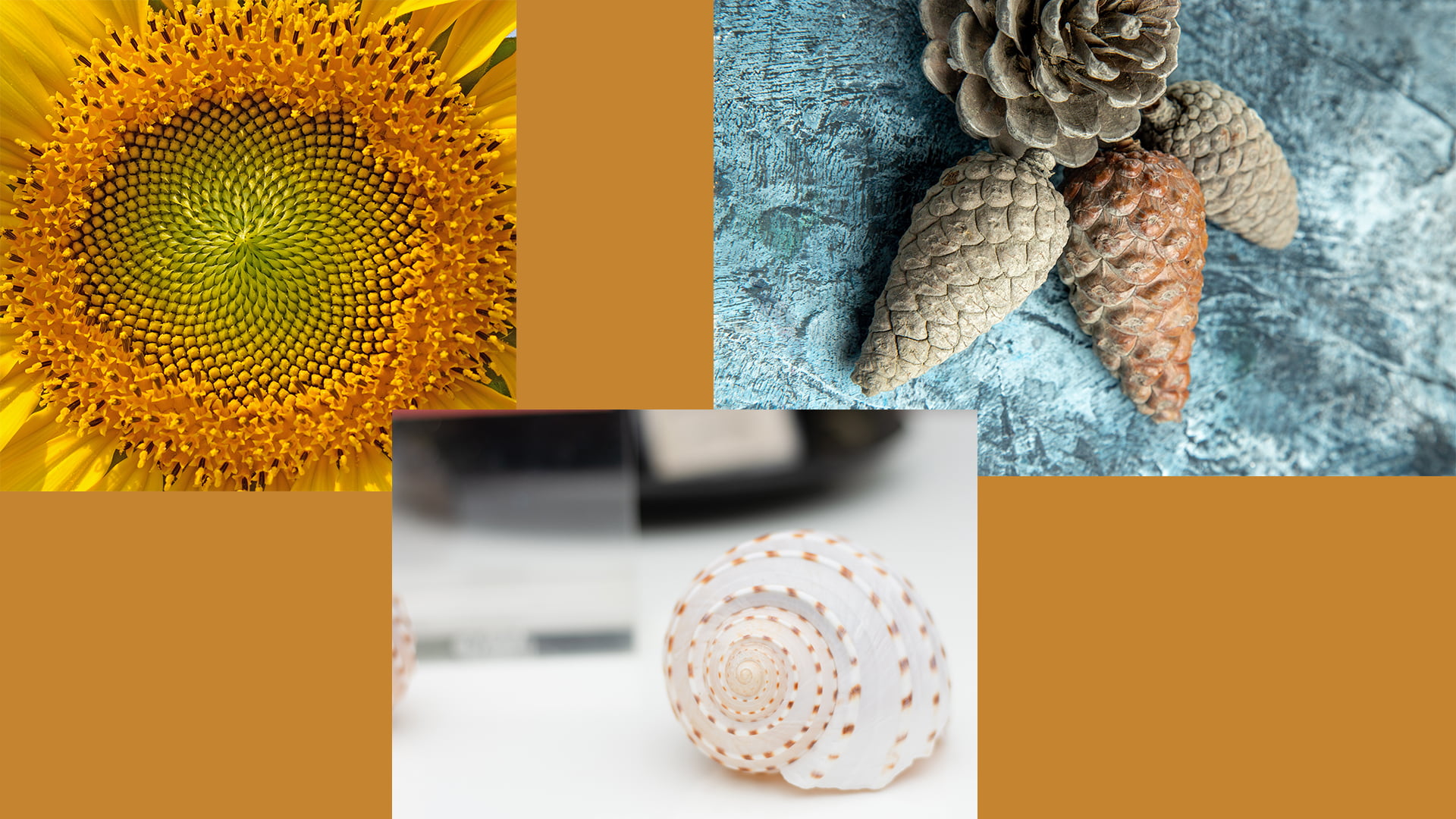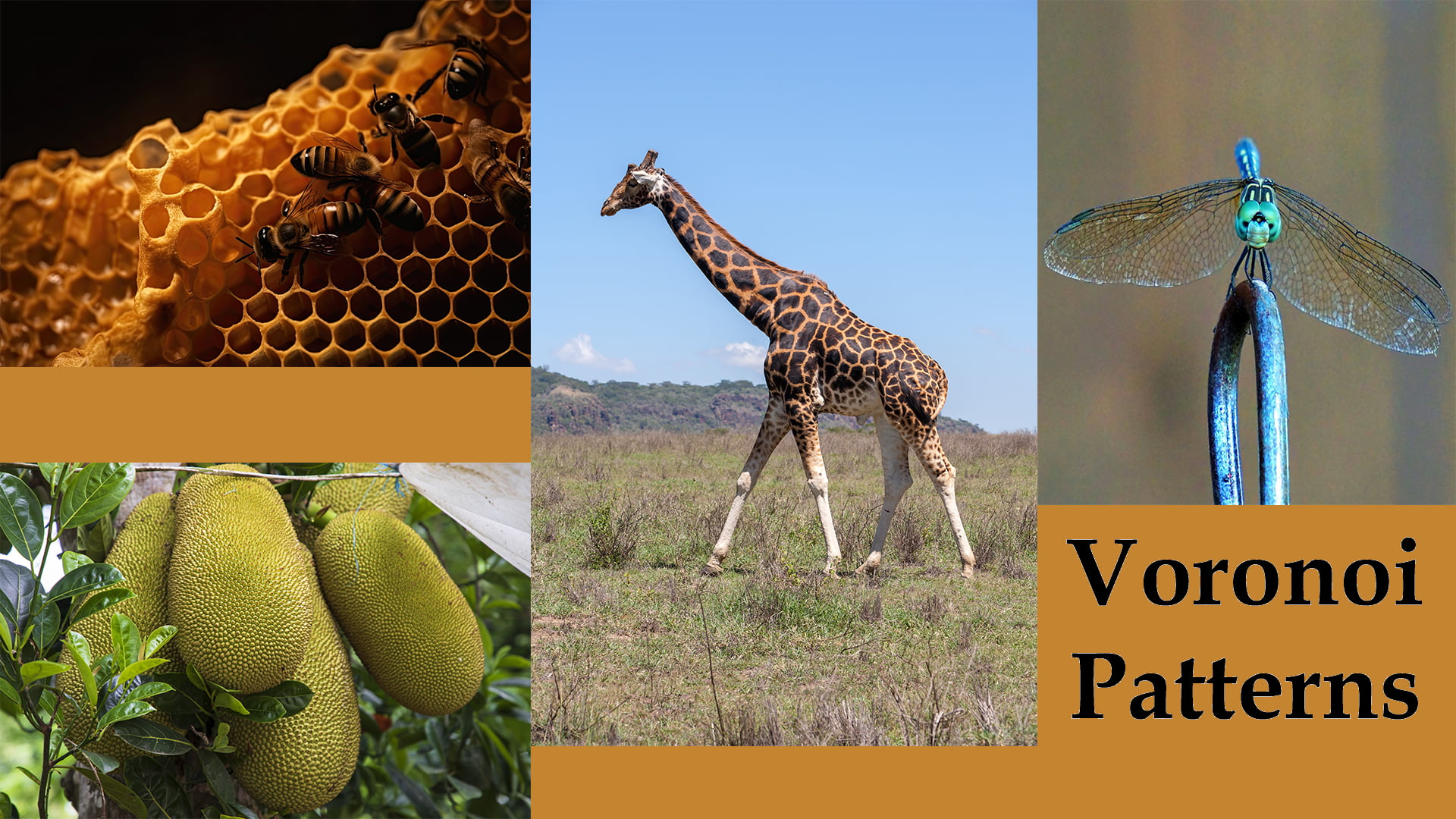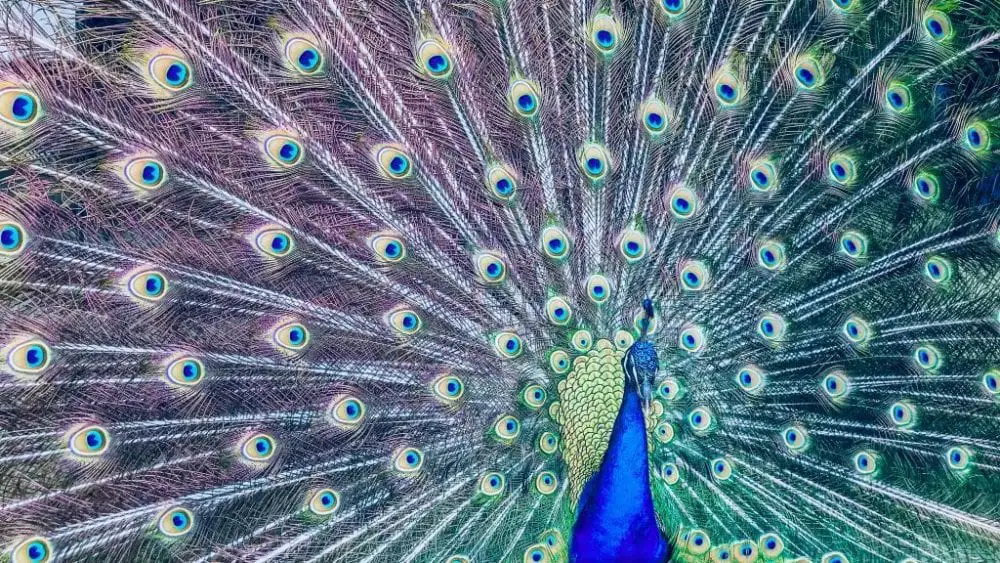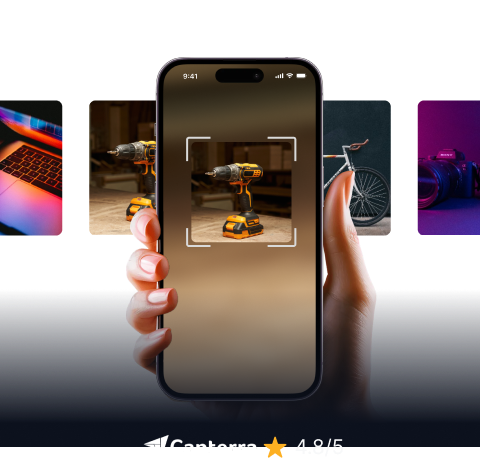
Introduction
Patterns in Nature
Patterns have so many uses in the natural world. Whether it’s related to survival or structural integrity, patterns have developed over time to become more and more useful due to evolution.
As creatures developed and changed over time, the patterns they create and the patterns that they wear have become fitter and fitter for their purposes. Whether it’s spinning a web to catch the most flies or if it’s having the best stripes to hide from predators or even prey.
In this sense, evolution is similar to an algorithm. The most effective patterns are getting tested and either rejected or accepted over time. The problem is that as prey adapts to hide from predators, predators must also adapt to survive. In this case, nature is just like technology. The best patterns and threads are brought forward in so many different ways, but as technology develops, specific human needs for technology also change.
Fibonacci Sequence
The Fibonacci sequence itself is found a lot in nature. It’s a natural pattern of growth, which is 0, 1, 1, 2, 3, 5, etc. (every new number is the sum of the two previous numbers). While a lot of natural patterns occur, the Fibonacci sequence is seen a lot in nature, whether it’s with the Golden Ratio or if it’s separate from it.
The sequence originates from a thought experiment about immortal rabbits. If two rabbits are in a field, are immortal, and mate once a month, having two offspring per pair, then the growth of the population is the Fibonacci sequence. It starts off with one pair, then there is still one pair the next month, then there are two pairs, then three, then five, then eight, etc.
It is mostly seen in nature with petals. The number of petals on a flower is usually a Fibonacci number. The applications of the Fibonacci sequence can be seen with the Golden Ratio.
Golden Ratio

The most common example of patterns in nature you’ll hear about is the Golden Ratio. It stretches from a spiral on the back of a shell to architecture, art, photography, flower petals, pinecones, and even tree branches.
The ratio is achieved with the Fibonacci sequence. Ignoring the first digit (0), each subsequent number divided by the previous one creates a spiral. If the sequence is 0,1,1,2,3,5,8,13, etc. Then the Golden Ratio is illustrated by using 1/1 = 1, 2/1 = 2, 3/2 = 1.5, 5/3 = 1.666…, 8/5 = 1.6, 13/8 = 1.625, etc. As you can see, the number is converging to something between 1.6 and 1.7. This number is the golden ratio, and, much like pi, it has no ending.
The golden ratio is already used in both the natural and the technological world. It helps with the structural integrity of buildings, pinecones, flowers, and creatures due to how the proportions work and how they converge on this number.
Voronoi Patterns
Fascinating phenomena that elegantly show how mathematical ideas abound in the natural world are Voronoi patterns. These patterns result from the idea of separating a space into sections depending on the distances to a given set of points. Imagine setting some seeds on a level ground. One can divide the area surrounding each seed into a zone in which any point within it is nearest to that seed among all others. Often irregularly formed, these areas are known as Voronoi cells. This geometric arrangement reflects how some natural patterns are created rather than only an abstract mathematical idea.
Voronoi patterns abound in the natural world in a range of circumstances. One amazing illustration of this pattern is the complex honeycomb constructions created by bees. Designed to maximise honey storage using the minimum possible wax, every hexagonal cell in the honeycomb is a Voronoi cell. Dragonfly wings also provide another remarkable illustration since the vein pattern there divides the wing into smaller portions like a Voronoi diagram. Not only are these natural patterns aesthetically beautiful, but they also frequently reflect the most effective method of space partitioning—which is essential for the survival and functioning of different species.

Usually, the demand for efficiency drives Voronoi patterns in nature to arise. These patterns maximize space and resources, whether it comes to the arrangement of seeds in a fruit like pomegranate or the cellular architecture of plant tissues. Voronoi patterns are among the fundamental types of patterns in nature, mostly because of their effectiveness. They show how, a concept that permeates the natural world, natural selection promotes designs that enhance utility while conserving energy expenditure. Knowing these trends not only helps us to understand the mathematical foundations of nature but also shows the great interdependence between geometric ideas and biological processes.
Symmetry
Symmetry is often used by animals to attract a mate. Whether it’s a peacock’s feathers blossoming in beautiful symmetry or if it’s in your own reflection, symmetry is appealing.
In nature, symmetry occurs in a similar way to the Golden Ratio. Objects, such as snowflakes, grow with chemical patterns that happen simultaneously and therefore create a shape with various lines of symmetry.
Snowflakes, in fact, can be mimicked to suit many different purposes. Their almost unique nature can be mimicked, as well as how their “code” works, their code being the chemicals and processes that create each individual snowflake. In this way, individual QR codes can be compared, as the information overlaid onto the QR code is what gives it its shape and its unique nature.

Stripes
Stripes, although not as mathematically created as symmetrical or proportional patterns, have immediately apparent uses in nature. The first and most obvious reason for stripes in nature is in terms of security. Zebras in a herd prevent lions from tracking a single individual zebra, making an attack difficult.
Every tiger has a different and unique set of stripes, meaning that they can be identified by these stripes. Tiger’s stripes are also a form of camouflage, allowing them to hide throughout the jungle and hunt their prey.
So, the use of a zebra’s stripes and a tiger’s appear to have the same purpose, but the ways in which this purpose is achieved oppose each other. In order for a tiger to blend in, it must be alone within the jungle, but for a zebra to blend in, they must be in a herd.
This is similar to the reason why barcodes aren’t enough for unique tracking. If a barcode is in a herd of other, similar-looking barcodes, how is a scanner going to pick up on this? Likewise, if a barcode is camouflaged or at a disorienting angle, how is a scanner going to be able to read the pattern? This is also similar to shops, as barcodes from various organisations actually aren’t unique, meaning if it’s scanned twice, you pay twice. While this can help in this context as if you’re buying two of the same item, only one of them needs to be scanned twice, speeding things up, it can also present an issue with identification and create difficulties relating to human error, such as accidentally scanning multiple items multiple times creating a hefty bill!
Not only can we look to nature to see solutions and opportunities for growth and improvement, but we can also look to nature to see the problems and how to overcome them.
Because what is the solution for a lion to hunt a zebra other than thinning the herd? Well, it’s to look for a zebra that stands out, and that can be found through all of the madness – like a scanner finding a QR code or an RFID tag. As barcodes are typically unique to the product type and organisation, not the item itself, it’s the specific ability to track an individual zebra or asset that’s difficult.
How does all of this help?
If we look for all of the patterns and analogies in nature and apply them to our own ever-evolving and ever-developing world, then we can better predict how things will happen and find the obvious next steps towards the future.
Whether it’s how lions track zebras in a herd and how that’s just like an asset tracking system, or if it’s the formation of “code” in snowflakes becoming like QR codes, or even if it’s how spiders create webs being comparable to the internet, there are so many parallels that can be drawn.
So, when you’re reading about new technologies and thinking about how they will affect your life, think about how nature’s been fulfilling that purpose for years and how that affects the survival possibility of both predator and prey.
How else can this help moving forward? If you see something that helps survival chances in nature, that helps growth, strength, and quality of life, Something that human beings aren’t using or haven’t latched onto yet. Something that may help create new networks, taller buildings, or a more connected world, then maybe that’ll be the next step towards the future.
In terms of what itemit is doing, we’re making every QR globally unique, meaning that no matter where you are, you know everything you need about the asset in front of you, helping the world become a lot more connected.

Try itemit
Choose a better way to track your assets. Start your free 14-day trial now!

Keep Learning
itemit Blog
Tips, guides, industry best practices, and news.
No Results Found
The page you requested could not be found. Try refining your search, or use the navigation above to locate the post.
